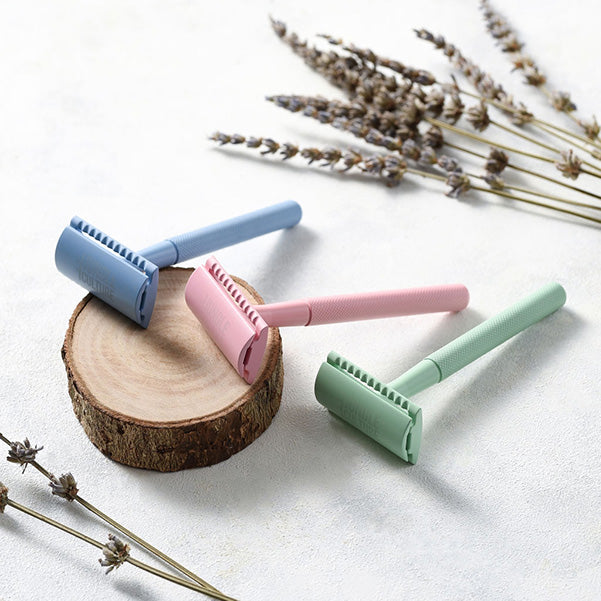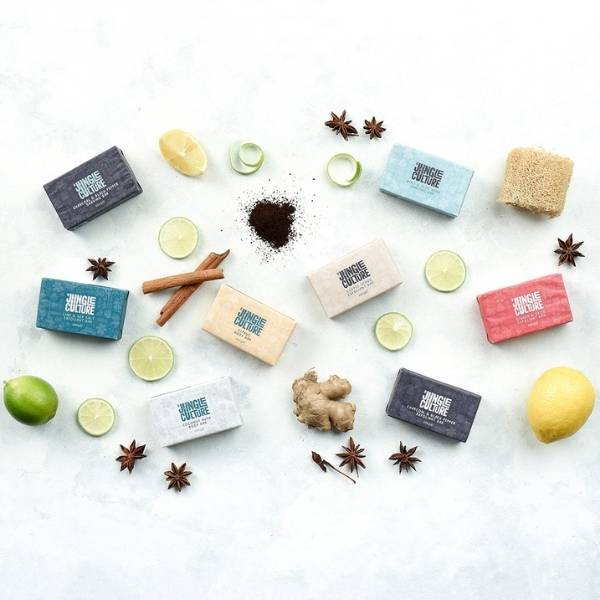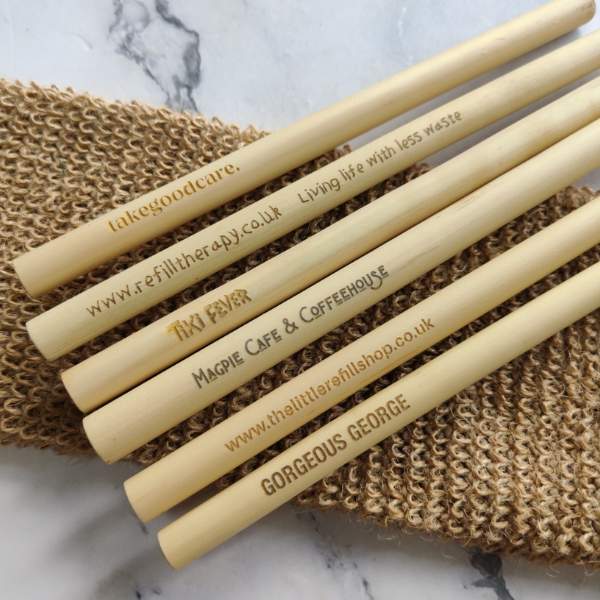Are candles eco-friendly?
Candles have long been known to reduce stress, create ambience and help us nod off to sleep, their existence dates back to 500BC when the Romans used tallow to create dipped candles. But the question remains. Are candles eco-friendly? Are candles bad for the environment? Do candles emit Co2?
The answer may depend on your perspective, but as with humans, not all candles are created equal. Some candles are made using natural ingredients, whilst some are made primarily from crude oil by-products. In order to properly assess whether candles are sustainable we have to look one-by-one at the different types of candle wax..
What types of candles are there?
Candles can be made from lots of different things, animal fats, coconut oil etc. But these types of candles are less common, so let’s take a look at the main categories of candles:
- Paraffin wax (by far the most common type of candle on the market
- Beeswax candles
- Microcrystalline wax
- Gel candles
- Soy candles
Now let’s go through them one-by-one and analyse how eco-friendly each type of candle is. At the end we will breakdown other elements of candles, such as their container, wick and essential oils to give a thorough overview of the sustainable attributes of a candle.
Which types of candles are eco-friendly and which types are not eco-friendly?
Paraffin wax candles
Paraffin wax candles are by far the most common type of candle on the market. Go into any large supermarket, department store or most online retailers and you’ll be able to find paraffin wax candles.
The positives of paraffin wax are that it gives a slow and consistent burn to any candle. It truly is the perfect wax for making candles if you completely ignore the environmental impact!
One 2009 study found that burning paraffin wax releases potentially dangerous chemicals, such as toluene.
However, the study was never published in a peer-reviewed journal, and the National Candle Association and European Candle Association raised questions about the study’s reliability. This may mean that although paraffin candles are not eco-friendly, they have not yet been proven to be dangerous.
According to a statement released by the European Candle Association, “They have provided no data for review, and their conclusions are based on unsupported claims. No reputable scientific study has ever shown any candle wax, including paraffin, to be harmful to human health.”
Paraffin wax is made from petroleum (crude oil), which is a non-renewable resource that requires intensive machinery to mine and refine. By definition, as a non-renewable resource paraffin wax is not sustainable and therefore it most certainly is not environmentally friendly.
Paraffin wax can be found in lots of products other than candles such as cosmetics, polishes and wax paper. You can read more about how paraffin wax is made here.
Are paraffin wax candles eco-friendly? Definitely not I’m afraid.

Beeswax Candles
There is a strong argument to say that beeswax candles are eco-friendly, sustainable and ethical. Firstly, beeswax is a renewable resource produced naturally and no chemicals whatsoever are needed to cultivate it.
Beeswax is biodegradable, organic and some (mostly beeswax companies) argue that when burned, beeswax releases ions that actually clean the air. Although, we looked extensively and could not find a scientific study to support this claim. (If any beeswax candle makers would like to provide some evidence to support this, we’re all ears).
Additionally, beeswax has been used alongside tallow for centuries to make candles, proving that it’s an efficient and effective substitute for tallow (animal fats) or for paraffin wax.
However…
Is beeswax vegan, no. Not according to Vegan Friendly Org UK.
Why isn’t beeswax vegan?
Let’s explain. We need to start by pointing out that honey is essentially food for bees.
Bees take nectar from flowers which they hold in their stomachs. When they return to their lovely hives, a worker bee draws the nectar out and chews it, breaking down the enzymes before storing the nectar by-product (honey) in honeycombs where it remains until they need sustenance.
The bees then make a small amount of beeswax to preserve the honey for when it’s needed. Normally during the colder winter months.
For bees to produce 1lb of beeswax, they need to use 15-22lbs worth of honey. To harvest the beeswax, beekeepers must also farm the honey. Taking this much honey from bees leaves them vulnerable in the winter months when they need food and contributes to hive collapse disorder.
There is an organisation in the US that practices “bee-centric” beekeeping, meaning that the beekeepers only do what’s best for the bees, not what’s best for profits. Here is a quote from one such beekeeper:
“If you’re a vegan for animal ethics then I would definitely say no to honey. And even if you are not a vegan, I would always say no to commercial honey that you buy in the stores because the practices are not sustainable and not kind to bees, just like all modern husbandry practices.”
“It is difficult to find beeswax from small local suppliers”, “most beeswax comes from commercial beekeepers.”
Source: https://allisonsapiaries.com/bees-make-wax/
Supporting commercial beekeeping and the production of honey and beeswax cannot be considered vegan and many bee-centric beekeepers argue that it’s contributing to the declining bee population.
There is however a contradiction in all of this. If we can’t use beeswax for fear of being unethical, then what about avocados, cherries, almonds and other products where bees have been exploited in order to produce them?
Sadly, we don’t have the answer and all we can do is lay out the facts. The decision ultimately is for each and every one of us to make. All in all, beeswax candles and other beeswax products definitely have less impact on the environment than say paraffin wax candles, but they’re not vegan and in order to make beeswax, bees need to be exploited (in most cases).
Interested in learning more about how beeswax is made? Check out this video by the BBC.
Are beeswax candles eco-friendly? Yes, they certainly are, but are beeswax candles ethical and sustainable? Begrudgingly, we think they’re not, but we really wish they were!

Microcrystalline wax
Microcrystalline wax is a common substitute for paraffin wax. The only notable difference between the two types of waxes are that microcrystalline wax has fine crystals and its darker in colour. It is made from petroleum and not sustainable, but it is completely safe for use in candles and no studies have ever found it to be dangerous.
Are microcrystalline wax candles eco-friendly? It’s a hard no from us.
Gel Wax
Gel candles gained popularity due to their vibrant and versatile colours and the fact that candle makers can embed small items into the candles, making them look fun and festive!
Sadly, gel wax is also made from a petroleum-based by-product and although it may look bright, colourful and all-round harmless, it’s actually just as bad for the environment as paraffin candles.
Are gel candles eco-friendly? The answer, sadly, is no.
Soy wax candles
Finally we come to soy wax candles. Here at Jungle Culture, our range of coconut shell candles are made using soy wax. You might think this makes us biased and willing to say or write anything to make you believe that our candles are the most eco-friendly!
Well, the truth is, like all of the candles mentioned on our list, soy has its advantages and disadvantages. Are soy wax candles eco-friendly? We’ll give you the facts and you can decide for yourself!
Although the soya bean is a natural product and can be grown organically, there is much debate around whether or not soy wax can accurately be called “organic”. Normally, soy wax is processed using chemicals although every supplier creates soy wax using slightly different methods which are often kept secret.
This means that the process by which soy wax is created is not 100% eco-friendly and organic and it’s difficult to know exactly how much chemicals are used in the production as soy wax manufacturers keep this info close to their chests!
With that being said, soy wax is a renewable resource and completely cruelty-free. No animals are used or harmed when manufacturing soy.

Which type of candle is the most eco-friendly?
As a company Jungle Culture prides itself on honesty and transparency, which is why we are happy to say that beeswax candles are certainly the lowest impact candles on the market when it comes to the environment.
However, on this issue we stand firmly with the bees and although beeswax candles are the most eco-friendly candle on the market, they are also the only non-vegan candle and arguably the most cruel which is why we use only soy wax in our candles, despite the manufacturing process being unnatural.
There is however more to candles than just the wax. So read on and let’s examine the eco credentials of other parts of the humble candle!
All candles burn. Isn’t burning bad for the environment? Do candles emit Co2 when they burn?
Although strong, reliable studies do not exist for every type of candle, paraffin wax candles emit around 10g of Co2 every hour. Meaning that a standard sized candle may emit between 30-50g of Co2 over the course of its lifetime.
This sounds like a relatively small amount, and that’s because it is. Although in general, Co2 emissions and emitting carbon dioxide is a bad thing as too much Co2 increases the temperature on Earth, a small amount of Co2 emissions generated from humans could be considered acceptable as Co2 is a necessary part of our planet’s life. Without it temperatures would plunge to beyond freezing.
In fact, plants require a certain amount of Co2 for photosynthesis. Without some Co2 we’d all be doomed!
Now, we’re not saying forget about emissions and start flying a jumbo jet to work, we’re just saying that as humans we do not need to be perfect. We need to be better.
In our opinion, the burning of candles is an acceptable level of emissions, but if you feel that 10g/per hour of Co2 emissions is too much, consider this…
A standard flight from London to New York generates around 986kg of Co2 emissions with an additional 1,877kg of Co2 created by “other warming effects from your flight”.
This roughly equates to 286,300 hours of candle burning. If you want to take a stand against emissions, we’re pretty sure there are more effective ways to do it!
Are essential oils eco-friendly?
Essential oils are one of the principal ingredients used in candle making. They are 100% natural and derived from various plants, fruits and nuts.
Much like candle wax and humans, not all essential oils are born equal. Some essential oils such as rose require 40-60 rose buds to produce a single drop of essential oil. This means that it takes a whopping 600 pounds of rose buds to produce a single ounce of rose essential oil.
When you factor in all of the water and labour that goes into growing and processing so many roses, you start to see the problem!
Conversely, citrus fruits such as lime are practically fountains of essential oils. Lime is so generous with it’s oils that the discussion of sustainability barely warrants a mention!
You can check the yields of some common essential oils right here. For the oils not mentioned on this list, we bring you Google! Alternatively, stay safe and use non-scented tea lights. Our coconut tea light holders create the perfect ambience, with none of the aroma!

Is candle making eco-friendly?
The process of making candles is relatively simple as we explain in our guide on how to make coconut shell candles. If you want to try it for yourselves, head on over to our article for a thorough walkthrough!
In short, whether candle making is sustainable or not depends entirely on which ingredients you choose to use. If you make candles with a natural wax and sustainable essential oils then you don’t have to worry too much!
How about the other elements of a candle? The wick? The jar?
In the past candle makers used lead as a stiffening agent in order to help wicks stand up without assistance. Nowadays, this is relatively uncommon and most high-quality candles have natural wicks.
Candle jars themselves are principally made from glass which is a recyclable material and according to Glass Alliance Europe it is recycled 80% of the time. Our coconut shell candles are made using coconut husks that would have otherwise been used as firewood, so up-cycling them as candle jars actually prevents them from creating emissions. They are also 100% natural, biodegradable and compostable.
Conclusion:
Candles, much like humans are not perfect, none of them are! As with most things, whether candles are eco-friendly or not depends on your personal opinion and definition of the often ambiguous phrase “eco-friendly”.
What we will say is that although some may argue that beeswax candles are unethical or that soy candles are not natural, there’s no denying that they are more sustainable than the alternatives.
So for now, we advise anyone who is in need of relaxation and serenity to go ahead, light up a candle, draw a bath, take out your favourite book and enjoy! Just make sure it’s either soy or beeswax!
And for those of you who choose to avoid candles… We wouldn’t leave you empty-handed. Here’s some jungle sounds to help you sleep! Jungle sounds.













Jungle Culture
July 31, 2024
Hi!
Thanks so much for your comments.
We would love to delve deeply into soybean production and issues around harvesting beeswax, but we are just a small team and the purpose of this article is to educate candle-lovers on the basic issues that each candle has.
In our opinion, no candle is perfect but with this information in hand, hopefully it helps people to make an informed decision.
Regarding where to purchase soy wax. If you’re producing the candles yourself as a start-up then we’d recommend looking locally. Our candles and wax are produced in Vietnam which probably won’t be of too much help, but we wish you good luck and feel free to contact us anytime if you need candle-making advice!
Jungle Culture Team